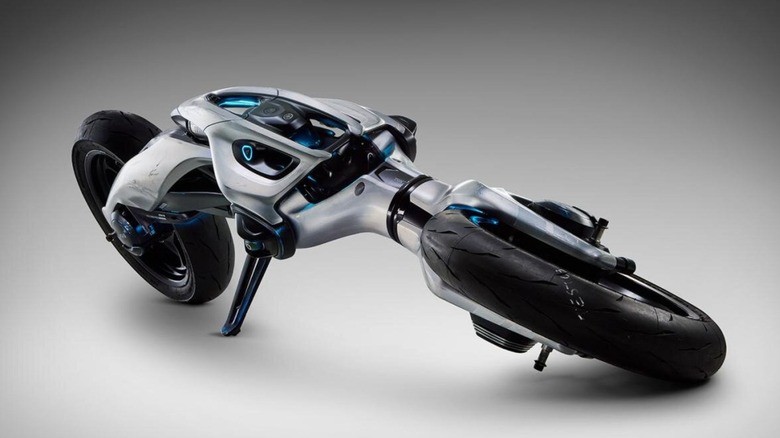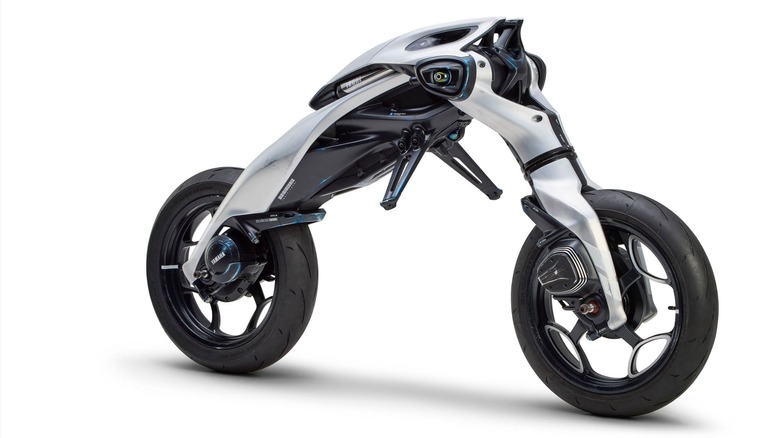Yamaha's Self-Balancing Motorcycle Prototype Can Pick Itself Up After Falling Over
Self-balancing motorcycles have been at the heart of motorcycle engineering dreams for a while. There have been numerous such concept motorcycles over the years, and the latest in that long line is Yamaha's MOTOROiD:Λ, a concept that it will showcase at the Japan Mobility Show 2025 in late October. Ahead of the reveal, the company has given us a glimpse of the bike, which looks as if it were pulled straight from a sci-fi film.
The design is a big departure from previous MOTOROiD bikes, thanks to an elevated torso and a fused axle module — that also doubles as a front suspension fork — for angle and direction adjustments right atop the front wheel. The company claims that MOTOROiD:Λ can autonomously right itself from a flat, 180-degree position by using various motors to bring itself vertical and maintain balance without human input.
The front fairings, fenders, and the dash panel are all seemingly integrated within a monolithic package, which arches above the main body. The concept of a proper seat and the riding posture associated with a high-performance sports bike were apparently not a key consideration for this one, unlike Yamaha's ill-fated Morpho concept bike from the late 1980s. The MOTOROiD:Λ's whole body appears to have been crafted out of polished metal, with black glass, rubber, and fiber parts breaking the monotony. Yamaha hasn't offered any details about the powertrain, nor do we have any idea of how it performs. For now, it seems more like an AI-first mobility concept.
The MOTOROiD:A and other self-balancing motorcycles
Yamaha claims that the bike is capable of learning and evolving autonomously through reinforcement learning. If that sounds familiar, well, it's because the approach is heavily deployed in the field of generative AI and self-driving systems. The company adds that MOTOROiD:Λ relies on AI-based learning, which means it will evolve through a trial-and-error process and, as the company puts it, grow alongside the user. That said, the MOTOROiD:Λ's self-balancing tech remains a mystery. Previous versions of the MOTOROiD concept have relied on Yamaha's in-house AMCES self-balancing technology, in which the battery modules served as a counterweight and opened like wing flaps on each side to balance turns and inclines.
The whole idea is to delicately balance the center of gravity, something living creatures learn to perform unconsciously. Interestingly, the rear haptic contact point present on Yamaha's older MOTOROiD concepts is gone. Instead, the MOTOROiD:Λ appears to have shifted to an entirely new approach of understanding the rider's intent and balancing the vehicle. We'll have to wait until Yamaha reveals more details about the underlying technology.
Other companies have released self-balancing concepts over the years. BMW tried its hand at a self-balancing motorcycle with the stunning VISION NEXT 100 concept. Similarly, Honda revealed a self-balancing two-wheeler concept powered by Riding Assist technology in 2017. A year before that, an upstart named Thrustcycle also revealed its own eye-catching GyroCycle concept. More recently, Lit Motors has announced that its self-balancing C-1 two-wheeler, first announced in 2012, will enter production in 2029.

